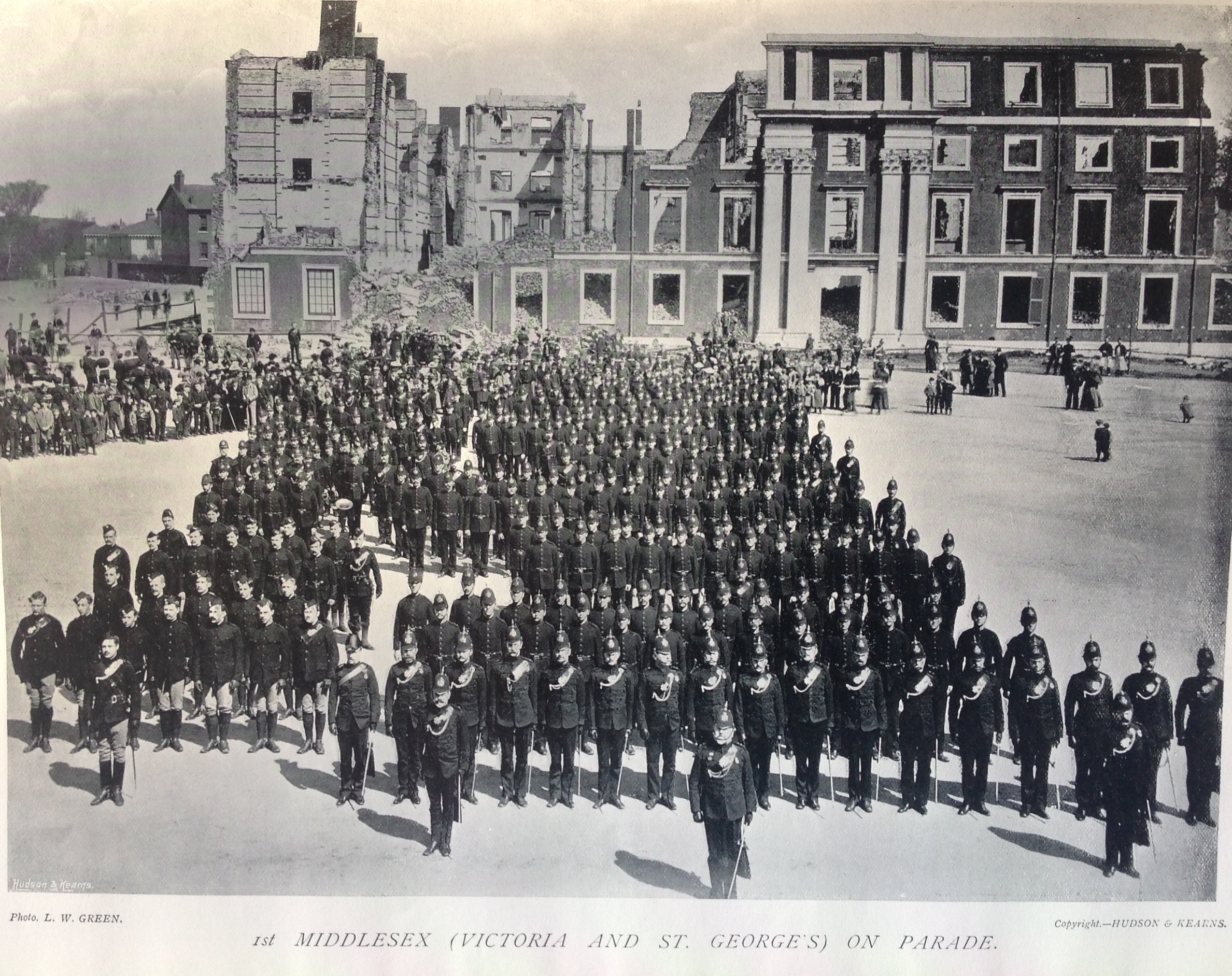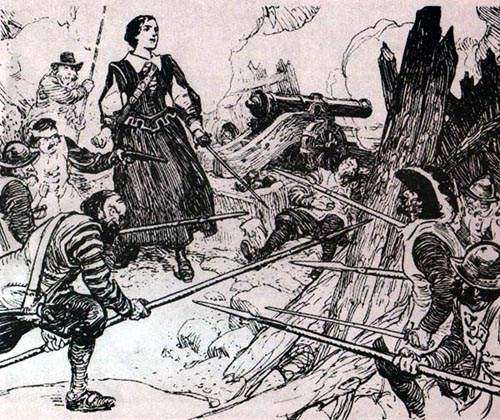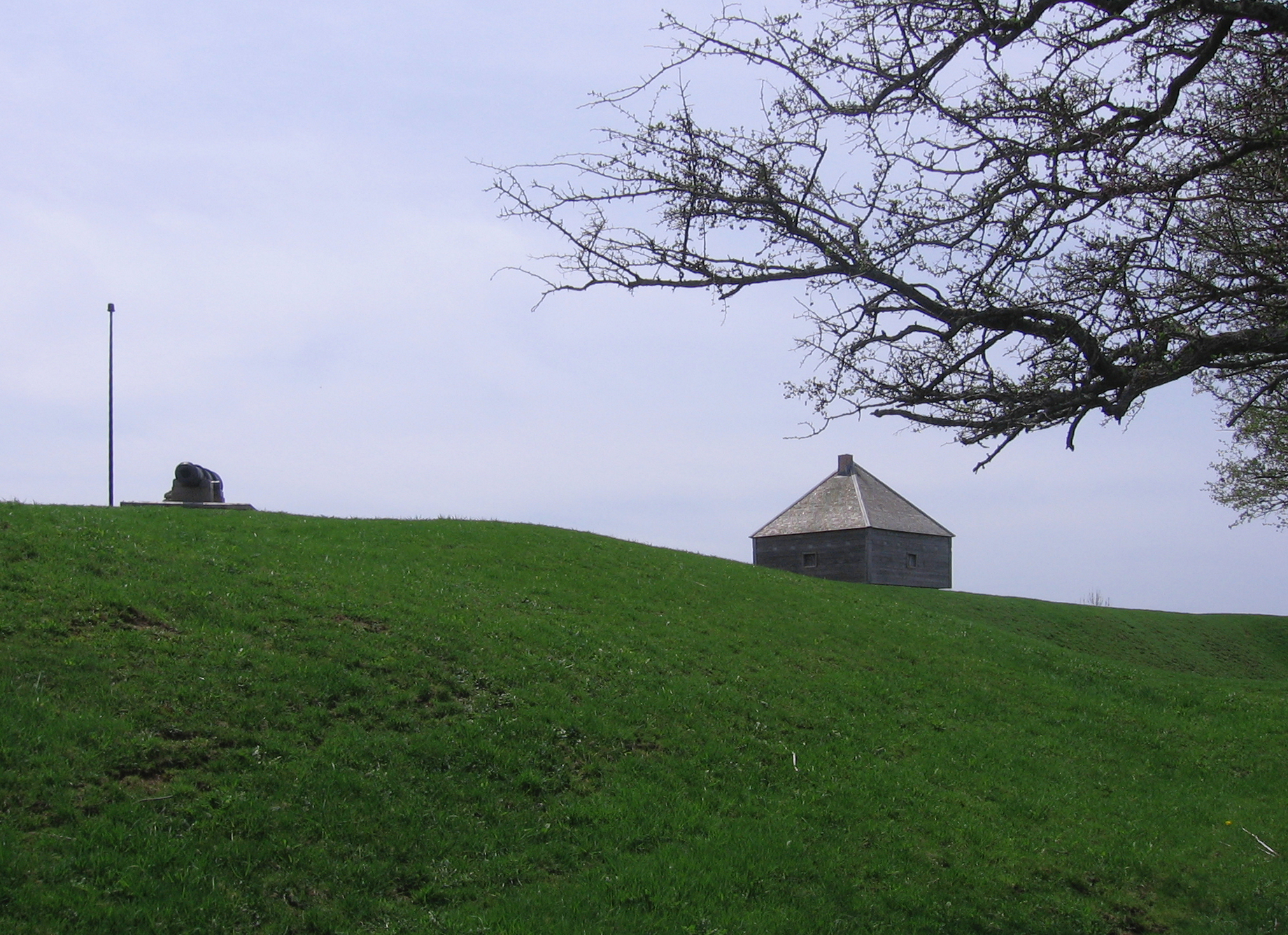|
Victoria Rifles (Nova Scotia)
The Victoria Rifles was a military unit of black soldiers in Halifax, Nova Scotia, that was established in 1860 in the wake of the Crimean War and on the eve of the American Civil War. It was one of the oldest black units established in Canada. On January 30, 1860, at a meeting of the Victoria Rifles, George Anderson was elected Captain and John H. Symonds (First Lieutenant 2nd Halifax Queen's) elected First Lieutenant. On May 15, 1860, the volunteer companies met at Lieutenant Haliburton's residence to form the Halifax Volunteer Battalion, and a representative of the Victoria Rifles was present. Six companies were chosen for the distinction and five were rejected. The Victoria Rifles company was prevented from becoming part of the Halifax Volunteer Battalion. As an elite Haligonian later observed of the Rifles: “The other companies would not allow them to come near them, to mingle with them, in the event of any united movement rendering it desirable to equalize the companies ... [...More Info...] [...Related Items...] OR: [Wikipedia] [Google] [Baidu] |
Chebucto Grays
Chebucto Grays was a volunteer rifle battalion that was raised in Halifax, Nova Scotia. In the wake of the Crimean War (1853–1856), there developed a Volunteer Force in Britain. As part of this movement, in Nova Scotia, thirty-two Volunteer companies were raised in Nova Scotia, with a total strength of two thousand three hundred and forty-one. In Halifax there were eleven companies with a total strength of eight hundred and sixty-eight men. The Chebucto Grays was the most distinguished battalion, many of the members belonging to The Halifax Club. The Chebucto Grays were one of 8 Regiments to serve in the Halifax Volunteer Battalion. Notable members * George Lang *Brenton Halliburton * William Blowers Bliss *Enos Collins *James William Johnston * Mather Byles Almon * John Fitzwilliam Stairs * Samuel Leonard Shannon * James Forman (merchant) *William Young (Nova Scotia politician) *Philip Carteret Hill *John William Ritchie Gallery File:LT.-Colonel William Chearnley - Co ... [...More Info...] [...Related Items...] OR: [Wikipedia] [Google] [Baidu] |
History Of Black People In Canada
History (derived ) is the systematic study and the documentation of the human activity. The time period of event before the invention of writing systems is considered prehistory. "History" is an umbrella term comprising past events as well as the memory, discovery, collection, organization, presentation, and interpretation of these events. Historians seek knowledge of the past using historical sources such as written documents, oral accounts, art and material artifacts, and ecological markers. History is not complete and still has debatable mysteries. History is also an academic discipline which uses narrative to describe, examine, question, and analyze past events, and investigate their patterns of cause and effect. Historians often debate which narrative best explains an event, as well as the significance of different causes and effects. Historians also debate the nature of history as an end in itself, as well as its usefulness to give perspective on the problems of t ... [...More Info...] [...Related Items...] OR: [Wikipedia] [Google] [Baidu] |
British Colonial Regiments
British may refer to: Peoples, culture, and language * British people, nationals or natives of the United Kingdom, British Overseas Territories, and Crown Dependencies. ** Britishness, the British identity and common culture * British English, the English language as spoken and written in the United Kingdom or, more broadly, throughout the British Isles * Celtic Britons, an ancient ethno-linguistic group * Brittonic languages, a branch of the Insular Celtic language family (formerly called British) ** Common Brittonic, an ancient language Other uses *''Brit(ish)'', a 2018 memoir by Afua Hirsch *People or things associated with: ** Great Britain, an island ** United Kingdom, a sovereign state ** Kingdom of Great Britain (1707–1800) ** United Kingdom of Great Britain and Ireland (1801–1922) See also * Terminology of the British Isles * Alternative names for the British * English (other) * Britannic (other) * British Isles * Brit (other) * Bri ... [...More Info...] [...Related Items...] OR: [Wikipedia] [Google] [Baidu] |
Military Regiments Raised In Nova Scotia
A military, also known collectively as armed forces, is a heavily armed, highly organized force primarily intended for warfare. It is typically authorized and maintained by a sovereign state, with its members identifiable by their distinct military uniform. It may consist of one or more military branches such as an army, navy, air force, space force, marines, or coast guard. The main task of the military is usually defined as defence of the state and its interests against external armed threats. In broad usage, the terms ''armed forces'' and ''military'' are often treated as synonymous, although in technical usage a distinction is sometimes made in which a country's armed forces may include both its military and other paramilitary forces. There are various forms of irregular military forces, not belonging to a recognized state; though they share many attributes with regular military forces, they are less often referred to as simply ''military''. A nation's military may f ... [...More Info...] [...Related Items...] OR: [Wikipedia] [Google] [Baidu] |
Infantry Regiments Of Canada
Infantry is a military specialization which engages in ground combat on foot. Infantry generally consists of light infantry, mountain infantry, motorized infantry & mechanized infantry, airborne infantry, air assault infantry, and marine infantry. Although disused in modern times, heavy infantry also commonly made up the bulk of many historic armies. Infantry, cavalry, and artillery have traditionally made up the core of the combat arms professions of various armies, with the infantry almost always comprising the largest portion of these forces. Etymology and terminology In English, use of the term ''infantry'' began about the 1570s, describing soldiers who march and fight on foot. The word derives from Middle French ''infanterie'', from older Italian (also Spanish) ''infanteria'' (foot soldiers too inexperienced for cavalry), from Latin '' īnfāns'' (without speech, newborn, foolish), from which English also gets '' infant''. The individual-soldier term ''infantr ... [...More Info...] [...Related Items...] OR: [Wikipedia] [Google] [Baidu] |
Black Nova Scotians
Black Nova Scotians (also known as African Nova Scotians and Afro-Nova Scotians) are Black Canadians whose ancestors primarily date back to the Colonial United States as slaves or freemen, later arriving in Nova Scotia, Canada, during the 18th and early 19th centuries. As of the 2021 Census of Canada, 28,220 Black people live in Nova Scotia, most in Halifax. Since the 1950s, numerous Black Nova Scotians have migrated to Toronto for its larger range of opportunities. Before the immigration reforms of 1967, Black Nova Scotians formed 37% of the total Black Canadian population. The first Black person in Nova Scotia, Mathieu da Costa, a Mikmaq interpreter, was recorded among the founders of Port Royal in 1604. West Africans were brought as enslaved people both in early British and French Colonies in the 17th and 18th centuries. Many came as enslaved people, primarily from the French West Indies to Nova Scotia during the founding of Louisbourg. The second major migration of Blac ... [...More Info...] [...Related Items...] OR: [Wikipedia] [Google] [Baidu] |
Volunteer Force (Great Britain)
The Volunteer Force was a citizen army of part-time rifle, artillery and engineer corps, created as a popular movement throughout the British Empire in 1859. Originally highly autonomous, the units of volunteers became increasingly integrated with the British Army after the Childers Reforms in 1881, before forming part of the Territorial Force in 1908. Most of the regiments of the present Territorial Army Infantry, Artillery, Engineers and Signals units are directly descended from Volunteer Force units. The British Army following the Crimea Prior to the Crimean War, the British military (i.e., ''land forces'') was made up of multiple separate forces, with a basic division into the ''Regular Forces'' (including the British Army, composed primarily of cavalry and infantry, and the ''Ordnance Military Corps'' of the Board of Ordnance, made up of the Royal Artillery, Royal Engineers, and the Royal Sappers and Miners though not including the originally civilian Commissariat De ... [...More Info...] [...Related Items...] OR: [Wikipedia] [Google] [Baidu] |
Queen Victoria's Rifles
The 9th (County of London) Battalion, London Regiment (Queen Victoria's Rifles) was a Territorial Army infantry battalion of the British Army. The London Regiment was formed in 1908 in order to regiment the various Volunteer Force battalions in the newly formed County of London, and the Queen Victoria's Rifles were one of twenty six units brought together in this way. History Early history The Queen Victoria’s Rifles could trace their origins back to the old volunteer regiments of the Napoleonic Wars when the Duke of Cumberland's Sharpshooters were formed as a Corps of Riflemen on 5 September 1803. The regiment was raised as the 1st (Victoria Rifle Club) Middlesex Rifle Volunteer Corps and became the 1st Middlesex Rifle Volunteer Corps on the formation of the Volunteer Force in 1860. One of the first officers of the Regiment was Captain Hans Busk - a key lobbiest in getting the Government to raise the Volunteer Force. By 1892 the 1st Middlesex and 6th (St George's) Rif ... [...More Info...] [...Related Items...] OR: [Wikipedia] [Google] [Baidu] |
Military History Of Nova Scotia
Nova Scotia (also known as Mi'kma'ki and Acadia) is a Canadian province located in Canada's Maritimes. The region was initially occupied by Mi'kmaq. The colonial history of Nova Scotia includes the present-day Canadian Maritime provinces and the northern part of Maine (Sunbury County, Nova Scotia), all of which were at one time part of Nova Scotia. In 1763 Cape Breton Island and St. John's Island (now Prince Edward Island) became part of Nova Scotia. In 1769, St. John's Island became a separate colony. Nova Scotia included present-day New Brunswick until that province was established in 1784. (In 1765, the county of Sunbury was created, and included the territory of present-day New Brunswick and eastern Maine as far as the Penobscot River.) During the first 150 years of European settlement, the colony was primarily made up of Catholic Acadians, Maliseet and Mi'kmaq. During the latter seventy-five years of this time period, there were six colonial wars that took place in Nova Sco ... [...More Info...] [...Related Items...] OR: [Wikipedia] [Google] [Baidu] |
Windsor, Nova Scotia
Windsor is a community located in Hants County, Nova Scotia, Canada. It is a service centre for the western part of the county and is situated on Highway 101. The community has a history dating back to its use by the Mi'kmaq Nation for several millennia prior to European colonization. When the Acadians lived in the area, the town was raided by New England forces in 1704. The area was central to both Father Le Loutre's War and the Expulsion of the Acadians during the Bay of Fundy Campaign in 1755. The town promotes itself as the birthplace of ice hockey and was the home of Canada's first internationally best-selling author, Thomas Chandler Haliburton. On April 1, 2020, the Town of Windsor amalgamated with the District of West Hants to become the West Hants Regional Municipality. History Having migrated from Port Royal, Nova Scotia, the Acadians were the first to settle in Pisiguit by the early 1680s. French census records dated 1686 list well established farms uti ... [...More Info...] [...Related Items...] OR: [Wikipedia] [Google] [Baidu] |
Halifax, Nova Scotia
Halifax is the capital and largest municipality of the Provinces and territories of Canada, Canadian province of Nova Scotia, and the largest municipality in Atlantic Canada. As of the 2021 Census, the municipal population was 439,819, with 348,634 people in its urban area. The regional municipality consists of four former municipalities that were Amalgamation (politics), amalgamated in 1996: History of Halifax (former city), Halifax, Dartmouth, Nova Scotia, Dartmouth, Bedford, Nova Scotia, Bedford, and Halifax County, Nova Scotia, Halifax County. Halifax is a major economic centre in Atlantic Canada, with a large concentration of government services and private sector companies. Major employers and economic generators include the Canadian Armed Forces, Department of National Defence, Dalhousie University, Nova Scotia Health Authority, Saint Mary's University (Halifax), Saint Mary's University, the Halifax Shipyard, various levels of government, and the Port of Halifax. Agricult ... [...More Info...] [...Related Items...] OR: [Wikipedia] [Google] [Baidu] |

.jpg)






